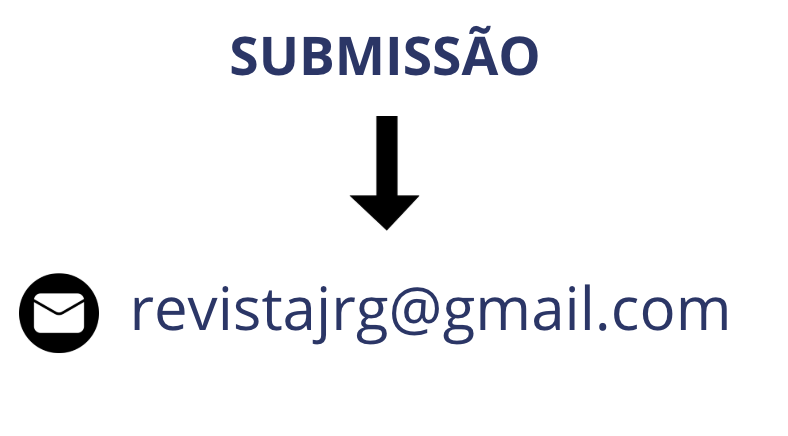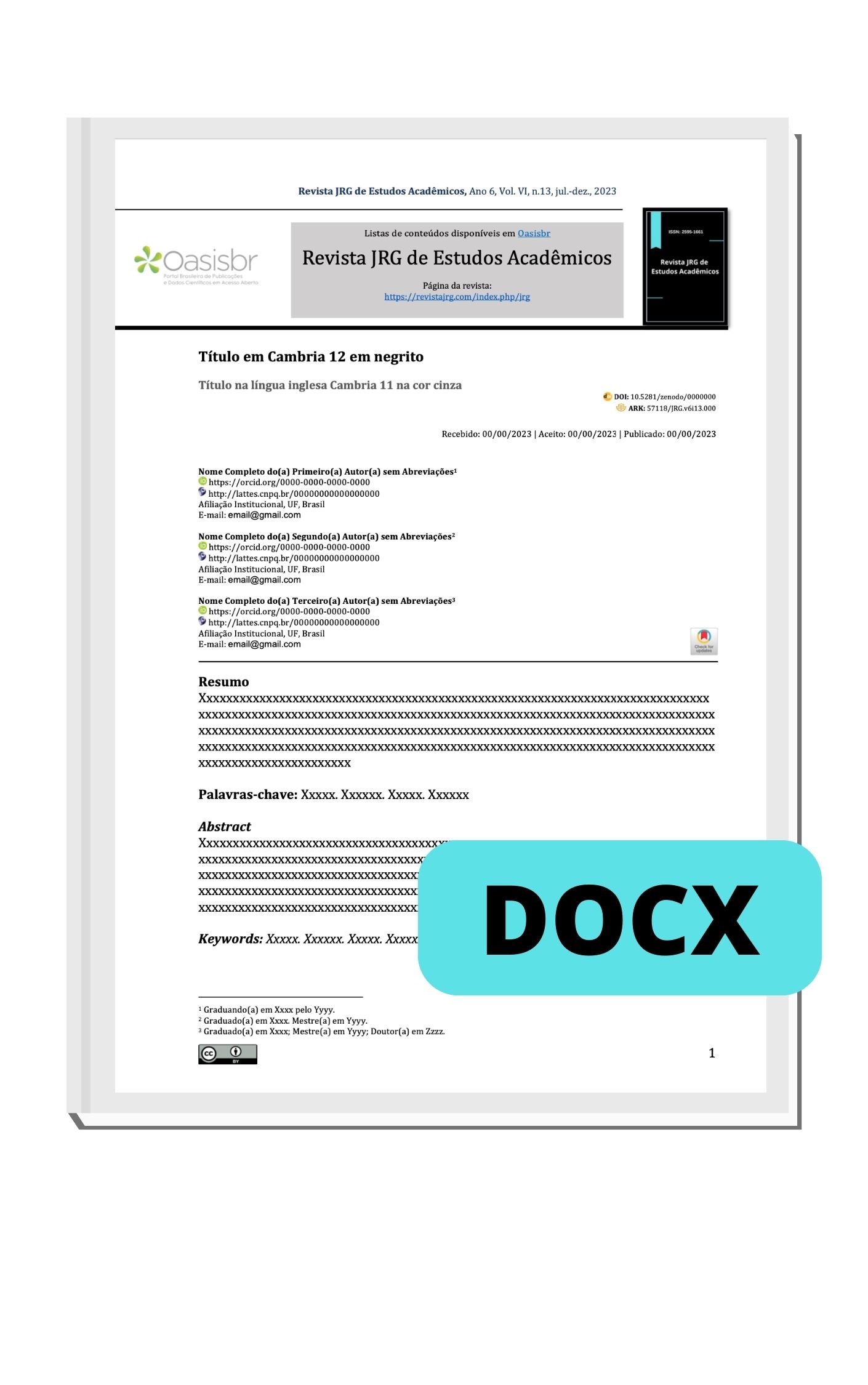Kinesiotherapy as a Strategy for Reducing Kinesiophobia in Patients with Chronic Cervical Pain: An Integrative Review
DOI:
https://doi.org/10.55892/jrg.v8i19.2669Keywords:
Kinesiotherapy, Chronic neck pain, Therapeutic exercise, Physical therapyAbstract
Introduction: Chronic neck pain is a common musculoskeletal condition associated with functional limitation and kinesiophobia — the fear of movement due to the anticipation of pain or injury. In this context, kinesiotherapy has been widely used as a therapeutic strategy to restore function and reduce fear of movement. Objective: To analyze the effectiveness of kinesiotherapy in reducing kinesiophobia in adults with chronic neck pain. Methodology: An integrative review was conducted in the PubMed, ScienceDirect, Cochrane, Lilacs, SciELO, and Web of Science databases, including randomized clinical trials published between 2020 and 2025. Results: Eight studies were selected that investigated interventions based on kinesiotherapy, either alone or combined with other therapeutic modalities. Discussion: Kinesiotherapy proved effective in reducing kinesiophobia, pain, and functional disability, in addition to promoting improvements in quality of life. Protocols combining exercise with pain education or virtual reality showed superior results, whereas passive modalities such as electrotherapy did not provide additional benefits. Conclusion: Kinesiotherapy is a safe and effective intervention for managing chronic neck pain, acting integratively on both physical and psychosocial factors
Downloads
References
AKODU, A. K.; NWANNNE, C. A.; FAPOJUWO, O. A. Efficacy of neck stabilization and pilates exercise on pain, sleep disturbance and kinesiophobia in patients with non-specific chronic neck pain: a randomized controlled trial. Journal of Bodywork and Movement Therapies, out. 2020.
ASIRI, F. et al. Kinesiophobia and its correlations with pain, proprioception, and functional performance among individuals with chronic neck pain. PLOS ONE, v. 16, n. 7, p. e0254262, 2021.
BARBOSA, J. C. et al. Effectiveness of Telerehabilitation Exercise Programme on Disability and Pain in Patients With Chronic Non‐Specific Neck Pain: Randomised Controlled Trial Assessor‐Blinded. Musculoskeletal Care, v. 23, n. 2, 2025. DOI: 10.1002/msc.70119.
BELTRAN-ALACREU, H. et al. Manual Therapy, Therapeutic Patient Education, and Therapeutic Exercise, an Effective Multimodal Treatment of Nonspecific Chronic Neck Pain. American Journal of Physical Medicine & Rehabilitation, v. 94, p. 887–897, out. 2015.
BÜYÜKTURAN, B. et al. The effects of combined sternocleidomastoid muscle stretching and massage on pain, disability, endurance, kinesiophobia, and range of motion in individuals with chronic neck pain: A randomized, single-blind study. Musculoskeletal Science and Practice, v. 55, p. 102417, out. 2021.
CEBALLOS-LAITA, L. et al. Effects of dry needling on pain, disability, kinesiophobia, pain catastrophizing and psychological distress in patients with chronic neck pain: A randomized controlled pilot study. Journal of Back and Musculoskeletal Rehabilitation, p. 1–9, 23 jul. 2021.
EMEDOLI, D. et al. Sensory-motor training with virtual reality as a complementary intervention to manual therapy for persistent non-specific neck pain: a randomized controlled trial. European Journal of Physical and Rehabilitation Medicine, v. 60, n. 4, 2024. Doi: 10.23736/S1973-9087.24.08115-2.
GUERRA-ARENCIBIA, L. et al. Effectiveness of a Telerehabilitation-Based Exercise Program in Patients with Chronic Neck Pain—A Randomized Clinical Trial. Sensors, v. 24, n. 24, p. 8069–8069, 2024. Doi: https://doi.org/10.3390/s24248069
TEJERA, D. et al. Effects of Virtual Reality versus Exercise on Pain, Functional, Somatosensory and Psychosocial Outcomes in Patients with Non-specific Chronic Neck Pain: A Randomized Clinical Trial. International Journal of Environmental Research and Public Health, v. 17, n. 16, 2020. https://doi.org/10.3390/ijerph17165950.
MARTINS‐DE‐SOUSA, P. H. et al. Additional effect of transcutaneous electrical nerve stimulation in a therapeutic exercise program for sedentary with chronic neck pain: A double‐blind randomized controlled trial. Physiotherapy Research International, v. 28, n. 1, p. e1978–e1978, 2022. https://doi.org/10.1002/pri.1978.
SANTANA, G. et al. Does Adding Electroanalgesic Modalities to a Multimodal Therapeutic Program Improve Clinical Outcomes in Individuals With Chronic Nonspecific Neck Pain? A Randomised Controlled Trial. European Journal of Pain, v. 29, n. 9, p. e70121–e70121, 2025. DOI: 10.1002/ejp.70121
SOUSA, M. T.; SILVA, M. D.; CARVALHO, R. Integrative review: what is it? How to do it? Einstein, São Paulo, v. 8, n. 1, p. 102-106, 2010.
SANTOS, C. M.; PIMENTA, C. A. M.; NOBRE, M. R. C. A estratégia PICO para a construção da pergunta de pesquisa e busca de evidências. Rev Latino-Am Enfermagem, Ribeirão Preto, v. 15, n. 3, p. 508-11, 2007.
JAVDANEH, N.; MOLAYEI, F.; KAMRANIFRAZ, N. Effect of adding motor imagery training to neck stabilization exercises on pain, disability and kinesiophobia in patients with chronic neck pain. Complementary Therapies in Clinical Practice, v. 42, p. 101263, fev. 2021.
JAVDANEH, N. et al. Pain Neuroscience Education Combined with Therapeutic Exercises Provides Added Benefit in the Treatment of Chronic Neck Pain. International Journal of Environmental Research and Public Health, v. 18, n. 16, p. 8848, 22 ago. 2021.
JAVDANEH, N. et al. Scapular exercise combined with cognitive functional therapy is more effective at reducing chronic neck pain and kinesiophobia than scapular exercise alone: a randomized controlled trial. Clinical Rehabilitation, v. 34, n. 12, p. 1485–1496, 13 jul. 2020.
KAZEMINASAB, S. et al. Neck pain: global epidemiology, trends and risk factors. BMC Musculoskeletal Disorders, v. 23, n. 1, 3 jan. 2022.
KIM, H.; LEE, S. Effects of pain neuroscience education on kinesiophobia in patients with chronic pain: a systematic review and meta-analysis. Physical Therapy Rehabilitation Science, v. 9, n. 4, p. 309–317, 30 dez. 2020.
LUQUE-SUAREZ, A.; MARTINEZ-CALDERON, J.; FALLA, D. Role of kinesiophobia on pain, disability and quality of life in people suffering from chronic musculoskeletal pain: a systematic review. British journal of sports medicine, v. 53, n. 9, p. 554–559, 2019.
O’RIORDAN, C. et al. Chronic Neck Pain and Exercise Interventions: Frequency, Intensity, Time, and Type Principle. Archives of Physical Medicine and Rehabilitation, v. 95, n. 4, p. 770–783, abr. 2014.
SAKUMA, S. et al. Integrating Physical Therapy and Virtual Reality to Manage Pain-Related Fear of Movement in Patients With Chronic Pain: A Randomized Controlled Trial. Cureus, 2025. Doi: 10.7759/cureus.7955.
SARIG BAHAT, H. et al, Remote kinematic training for patients with chronic neck pain: a randomised controlled trial. European Spine Journal, v. 27, n. 6, p. 1309–1323, 2017.
VALENZA-PEÑA, G. et al. Effectiveness of Self-Care Education for Chronic Neck Pain: A Systematic Review and Meta-Analysis. Healthcare, v. 11, n. 24, p. 3161, 13 dez. 2023.
WU, A.-M. et al. Global, regional, and national burden of neck pain, 1990–2020, and projections to 2050: a systematic analysis of the Global Burden of Disease Study 2021. The Lancet Rheumatology, v. 6, n. 3, p. e142–e155, 1 mar. 2024.
YESIL, H. et al. Does the Use of Electrotherapies Increase the Effectiveness of Neck Stabilization Exercises for Improving Pain, Disability, Mood, and Quality of Life in Chronic Neck Pain? Spine, v. 43, n. 20, p. E1174–E1183, 2018.
ZOETE, R. Exercise Therapy for Chronic Neck Pain: Tailoring Person-Centred Approaches within Contemporary Management. Journal of Clinical Medicine, v. 12, n. 22, p. 7108–7108, 15 nov. 2023.











































